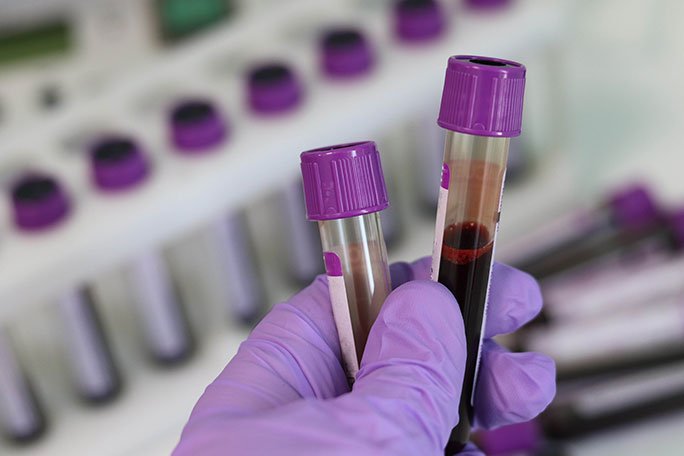The Importance of FDA Regulations in Healthcare Facilities
Summary
- Understanding FDA Regulations is crucial for healthcare facilities when purchasing and maintaining medical equipment.
- Healthcare facilities must ensure that all medical equipment is FDA-approved and properly maintained to provide safe and effective patient care.
- Following FDA guidelines can help healthcare facilities avoid fines, penalties, and Legal Issues associated with non-compliance.
The Importance of FDA Regulations in Healthcare
In the United States, the Food and Drug Administration (FDA) plays a critical role in regulating the safety and effectiveness of medical equipment used in healthcare facilities. The FDA ensures that medical devices meet certain standards to protect the health and well-being of patients. Healthcare facilities must comply with FDA Regulations when purchasing and maintaining medical equipment to provide quality care and prevent potential risks to patients.
Understanding FDA Regulations for Medical Equipment
Healthcare facilities must have a clear understanding of FDA Regulations for medical equipment to ensure compliance and patient safety. The FDA categorizes medical devices into three classes based on their level of risk:
- Class I: Low-risk devices such as tongue depressors and bandages
- Class II: Moderate-risk devices like infusion pumps and syringes
- Class III: High-risk devices such as pacemakers and replacement heart valves
It is essential for healthcare facilities to purchase FDA-approved medical equipment that meets specific requirements for safety and effectiveness. By complying with FDA Regulations, healthcare facilities can uphold high standards of care and minimize risks associated with using non-approved or faulty medical devices.
Steps for Healthcare Facilities to Comply with FDA Regulations
Healthcare facilities must take several steps to comply with FDA Regulations when purchasing and maintaining medical equipment:
- Educate staff: Provide training to staff members responsible for purchasing and maintaining medical equipment on FDA Regulations and guidelines.
- Verify FDA approval: Before purchasing new medical equipment, verify that it is FDA-approved and meets all safety and performance standards.
- Maintain proper documentation: Keep detailed records of all medical equipment purchases, inspections, and maintenance activities to demonstrate compliance with FDA Regulations.
- Establish maintenance protocols: Develop and implement regular maintenance protocols for medical equipment to ensure proper functioning and safety for patients.
- Perform Quality Control checks: Conduct regular Quality Control checks on medical equipment to identify any issues or defects that may compromise patient care.
- Monitor recalls: Stay informed about FDA recalls and safety alerts for medical equipment to take necessary actions to address potential risks to patients.
Benefits of Compliance with FDA Regulations
By complying with FDA Regulations for purchasing and maintaining medical equipment, healthcare facilities can experience several benefits:
- Enhanced patient safety: FDA-approved medical equipment ensures the safety and well-being of patients during treatment and care.
- Legal compliance: Following FDA Regulations helps healthcare facilities avoid fines, penalties, and Legal Issues associated with non-compliance.
- Improved quality of care: By using FDA-approved medical equipment, healthcare facilities can provide high-quality care and better outcomes for patients.
Conclusion
Healthcare facilities must prioritize compliance with FDA Regulations when purchasing and maintaining medical equipment to ensure patient safety and quality care. By understanding FDA guidelines, verifying approval, establishing maintenance protocols, and monitoring recalls, healthcare facilities can uphold high standards of care and prevent potential risks associated with non-compliance. Compliance with FDA Regulations not only benefits patients but also helps healthcare facilities avoid fines and Legal Issues related to using non-approved medical equipment. Investing in FDA-approved medical equipment and following regulatory guidelines are essential steps for healthcare facilities to provide safe and effective patient care in the United States.

Disclaimer: The content provided on this blog is for informational purposes only, reflecting the personal opinions and insights of the author(s) on the topics. The information provided should not be used for diagnosing or treating a health problem or disease, and those seeking personal medical advice should consult with a licensed physician. Always seek the advice of your doctor or other qualified health provider regarding a medical condition. Never disregard professional medical advice or delay in seeking it because of something you have read on this website. If you think you may have a medical emergency, call 911 or go to the nearest emergency room immediately. No physician-patient relationship is created by this web site or its use. No contributors to this web site make any representations, express or implied, with respect to the information provided herein or to its use. While we strive to share accurate and up-to-date information, we cannot guarantee the completeness, reliability, or accuracy of the content. The blog may also include links to external websites and resources for the convenience of our readers. Please note that linking to other sites does not imply endorsement of their content, practices, or services by us. Readers should use their discretion and judgment while exploring any external links and resources mentioned on this blog.
